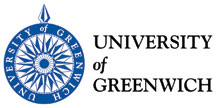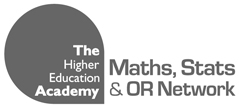Being a Professional Mathematician
How to use these resources in the undergraduate curriculumThe case studies produced for this project involve mathematical practitioners in a range of industrial, commercial and academic fields, and set out to show that mathematics graduates have the opportunity to develop new mathematics in many different contexts in the twenty-first century workplace. Since in many of the interviews the participants talked about the skills required by mathematicians in their field, the need for continuing professional development and the importance of professional practice such as networking, the resources also contain material relevant for those developing undergraduates’ understanding of their employability and employers’ expectations. Here we first suggest how the resources relate to the undergraduate mathematics curriculum, and then offer specific ideas as to how tutors could use the resources with students. "Being a Professional Mathematician” in the undergraduate mathematics curriculum Mathematics degree programmes vary widely between universities, for the reasons discussed in the relevant Quality Assurance Agency Benchmark subject statement but there are likely to be four areas in which undergraduates may naturally explore "being a professional mathematician":
It is envisaged that the resources produced for this project can support all four of these areas. The next section suggests ways in which lecturers can use these resources. Using the case studies and worksheets in teaching undergraduates The materials produced for this project are (with the consent of the participants in the case studies) released under a licensed under a Creative Commons Attribution-NonCommercial-ShareAlike 3.0 Unported License. This means that you are free to adapt them for your own (non-commercial) purposes. This section indicates ways in which the case study interviews might be used. Other resources are available from the Resources link above. Examples of contexts in which the materials might be used are:
Seminar-type discussion might be tutor-led or student-led. In the former case, the tutor might lead discussion around some of the issues covered in the project's worksheets, using examples from the case studies such as those suggested in the worksheets. Students might be asked to prepare in advance by listening to some of the case study interviews, or the tutor might plan the class as an introduction to the issues without requiring student preparation. Universities cover PDP in different ways, but reflection on learning, personal development and career planning is usually central to the implementation. The case studies, and the material in which representatives of professional bodies and learned societies explain the role of their organisations, are likely to be useful in the delivery of PDP. The careers of the participants in the case studies, and the challenges they have faced in forging their careers, provide a context for students to think about their own futures. The comments about the skills required in careers in the different area of mathematics will support students in reflecting on their own preparation for careers after they graduate. The case studies could provide a starting point for a variety of final year projects. These might focus on applications of mathematics, the culture of doing mathematics, or the history of mathematics. Suggestions for possible project titles, and notes on issues that might be explored, are provided.***. Tutors wishing to provide context for standard mathematical material might play extracts from the case study interviews in class, to motivate students, break up “chalk and talk” sessions, and show mathematics as a living subject. Participants at the HE STEM workshop "Being a Professional Mathematician", at the University of Greenwich on 15 May 2012, commented on how they might incorporate these materials in their teaching.
Sean Ryan, University of Hertfordshire
Simon Shaw, Brunel University |
This project was supported by the MSOR Network, the Institute of Mathematics and its Applications and the Universities of Greenwich and Birmingham as part of the National HE STEM Programme and was completed in May 2012.
![]()
This work is licensed under a Creative Commons Attribution-NonCommercial-ShareAlike 3.0 Unported License.
|



